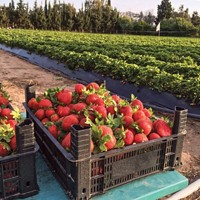Advertisement
Grab your lab coat. Let's get started
Welcome!
Welcome!
Create an account below to get 6 C&EN articles per month, receive newsletters and more - all free.
It seems this is your first time logging in online. Please enter the following information to continue.
As an ACS member you automatically get access to this site. All we need is few more details to create your reading experience.
Not you? Sign in with a different account.
Not you? Sign in with a different account.
ERROR 1
ERROR 1
ERROR 2
ERROR 2
ERROR 2
ERROR 2
ERROR 2
Password and Confirm password must match.
If you have an ACS member number, please enter it here so we can link this account to your membership. (optional)
ERROR 2
ACS values your privacy. By submitting your information, you are gaining access to C&EN and subscribing to our weekly newsletter. We use the information you provide to make your reading experience better, and we will never sell your data to third party members.
Environment
Large Methyl Bromide Exemptions Granted for Agricultural Use
December 6, 2004
| A version of this story appeared in
Volume 82, Issue 49
The U.S. and 11 other developed countries can continue to use the fumigant methyl bromide in 2005, negotiators for the Montreal protocol agreed in Prague on Nov. 26. The parties to the Montreal Protocol on Substances That Deplete the Ozone Layer had agreed in 1995 to phase out the use of methyl bromide in developed countries by 2005. However, the treaty allows exemptions for uses where economically feasible alternatives to the pesticide are not available. Under the Nov. 26 agreement, the U.S. is allowed to use methyl bromide at 37% of its 1991 baseline level in 2005 and at 27% in 2006. As a result, the U.S., rather than decreasing methyl bromide use in 2005, may be increasing it. In 2003, according to EPA figures, the U.S. released 7,674 metric tons of methyl bromide gas, primarily on agricultural soils. In 2005, it is being allowed to use 8,942 metric tons, which is more than half of the total allowed for all 12 developed countries that applied for exemptions. The U.S. claims that methyl bromide use is especially important for strawberry and tomato production.



Join the conversation
Contact the reporter
Submit a Letter to the Editor for publication
Engage with us on Twitter